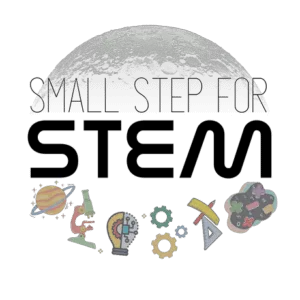If your child loves dinosaurs, this is a science experiment that is sure to WOW them!
Making dinosaur fossils out of salt dough is a great experiment to talk through how fossils are formed, what we can learn from fossils, and how paleontologists come to conclusions by studying fossils. It’s also a good sensory experiment, since your child can help pour ingredients and mix the dough.
Making these salt dough dinosaur fossils is easy, quick, and packed with educational value.
One great thing about this experiment is that, with the exception of putting the fossil rounds in the oven and taking them out, your child can do most of the steps of this experiment with you!

How to make the Salt Dough Dinosaurs Fossils experiment
Supplies you will need
For the Salt Dough Dinosaurs Fossils experiment, you’ll need:
- 2 cups of flour – we used whole wheat
- 1 cup of salt
- 1 cup of warm water
- Cookie sheet
- Toy dinosaurs
- Optional: paint and paintbrushes, if you want to paint your fossils
Before you start
We found that this experiment got a tad messy between the flour/salt/water mixture and the paints. It might be helpful to put down a towel before getting started.
Instructions
Here is how to do the Salt Dough Dinosaurs Fossils experiment with your child:
Step 1: Add flour to your bowl

We used whole wheat flour for our experiment. It resembles sand better than white flour, so the final product looks more natural.
Plus, I’ve had a canister of whole wheat flour sitting in my pantry for a long time. My ambitious plans of making my own loaves of whole wheat bread didn’t pan out.
Get your preschooler involved: Have your child add the flour to the mixing bowl. I found that I had to fill the measuring cup up for her because she wasn’t able to fill it the entire way in our narrow canister.
Step 2: Add salt

You don’t have to use pink salt as I did; it’s just what I had handy. I would have rather used white table salt so I didn’t add color to the salt dough fossils!
Get your preschooler involved: Same for the salt. I filled up the measuring cup and my daughter poured it into the mixing bowl.
Step 3: Mix dry ingredients

Use your spatula to mix the flour and salt together in this step. This is to ensure you don’t have any clumps of either ingredient.
Get your preschooler involved: Any chance to use a spatula and my daughter is all for it!
Step 4: Add a cup of warm water and mix well

You want the consistency to be close to wet sand to make it easy to mold and keep its shape.
Get your preschooler involved: Have your child carefully pour the water into the mixing bowl. Be sure that the cup holding the water is not too warm for their hands.
Step 5: Create the fossil rounds

I made a ball size between the size of a golf ball and a baseball, then used my palm to smush it down onto the cookie sheet.
You want the smushed fossil round to be thick enough to see the dinosaur imprint. My fossil rounds were probably close to an inch thick.
Get your preschooler involved: This step was my daughter’s favorite! I created the ball for her and let her smush it onto the cookie sheet. I did have to re-mold the rounds a little.
Step 6: Bake at 250F for about 1.5 hours
The goal is to make the fossil rounds hard enough to keep their shape. Mine were definitely as hard as a rock!
OPTIONAL: Paint your fossils!

Since my toddler loves painting so much, we decided to throw an extra step in just for fun.
We used simple paints and paintbrushes and I let her paint her fossils however she wanted. She loved getting creative with it and mixing paints on her fossils.
The science behind the Salt Dough Dinosaur Fossils science experiment
If your child enjoys dinosaurs, they will love this science experiment that showcases how we are still learning about dinosaurs today.
For the parent
Fossils form when layers of mud and sand build upon the remains of animals and other living beings. As time goes by, those layers turn hard enough to preserve the shape of the remains below it, creating a fossil.
Paleontologists use tools to carefully dig out these fossils and learn more about the remains fossilized.
For the child
Fossils are formed from mud and sand form layers on top and around animal remains. We are able to study dinosaurs today because of the fossils that were formed a long, long time ago.
Scientists called Paleontologists use special tools to carefully dig up these very old fossils and piece together the dinosaur.
We can learn a lot from fossils: from how these animals existed to how animals that we see now may have existed long ago.
More earth science experiments to try out with your child
- Making Waves – learn about oceanography by containing a wave
- Cloud in a Jar – create a cloud in a jar to learn how they form
- Rainbow Rain – see what happens right before it rains, but with a rainbow twist!
FAQ about the Salt Dough Dinosaurs Fossils Experiment
What type of flour should I use?
You can use any all-purpose flour for this experiment. I used a whole wheat because it looks more like the sand you would find a fossil in, plus we had a lot of it on hand.
Can you make dinosaur fossil prints on playdough?
Yes! The instructions on how to harden the playdough fossils are a little different, however. Here’s a good article to show you how to do it.
